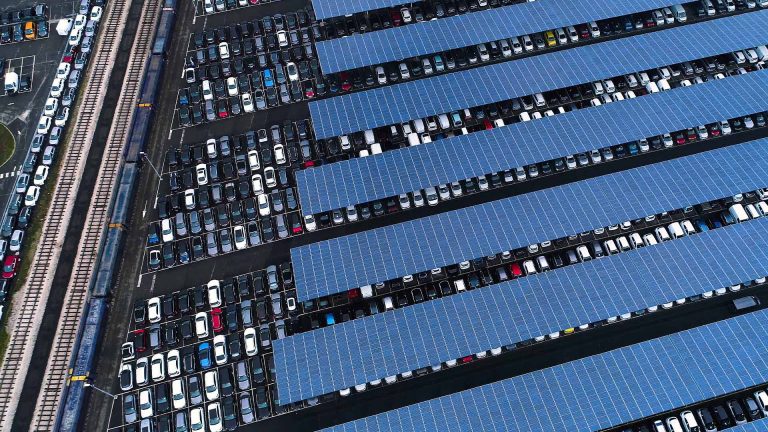Why do solar panels look so different these days? And why have we started installing them on top of mountains, using them to pave our roads, and putting them in the middle of our oceans?
Well, if we cover enough of our planet in solar panels, we’ll have a good chance of halting the planet’s rising temperature, and maybe even cooling it a couple of degrees. But how would that work?
Could we use the panels to reflect the Sun’s heat into space? How many solar panels would it take to power everything on the Earth? And why could a solar-powered planet be bad for the environment?
One way we could cool the planet is through something known as the albedo effect. Albedo refers to the amount of light that’s reflected off a surface without being absorbed.
For instance, if all of the Earth were covered in ice, the albedo would be around 0.84. This means the Earth would reflect 84% of the sunlight that hits it.
But if the entire Earth was covered by a forest canopy, that number would be about 0.14. Only 14% would be reflected, meaning that most of the sunlight would be absorbed. So, if we take a bunch of reflective things, like solar panels, and line the Earth with them, the renewable energy they produce would help to cool the Earth. They’d also reflect a lot of heat away.
And then our planet would become cooler in no time, right? Not exactly.
Instead of our solar panels cooling the Earth, it could make things hotter instead. Although solar panels might look super-reflective to us, they’d do a pretty bad job of reflecting sunlight into space.
Because solar panels are so dark, they absorb sunlight. This would increase Earth’s ground temperatures. Plus, according to the laws of thermodynamics, we’d be creating even more heat every time our solar panels converted solar energy into electricity. So, let’s scratch that whole albedo idea.
If we’re going to cool the Earth with solar panels, it’ll have to be by using them to completely replace fossil fuels, like oil, gas, and coal. If we stop using fossil fuels, we won’t produce as much greenhouse gas. Then we’ll stop heating our planet so much.
So how many solar panels would we need to power everything on Earth? If we’re talking about a typical 350W solar panel, it will take about 51.4 billion of them. Imagine a solar power plant that covers 299,467 square km (115,625 square mi). That would about the size of the U.S. state of Arizona.
To build this massive project, lots of people would need to manufacture the solar panels, install them, and maintain them. But it shouldn’t be hard to find a willing workforce. After all, there will be a lot of former fossil fuel industry employees looking for jobs.
So all we’d have to do is retrain them, and hope they don’t complain too much. We’d be dealing with plenty of other complaints about this project. People would complain about the noise during construction, the glare from the panels themselves, and the increased traffic from panel maintenance vehicles in residential areas.
Plus, people might be upset about decreasing property values, especially if their views change from enjoying a beautiful landscape to a massive solar farm. For a large-scale solar project like this, another issue would be land use. Using land for the solar farm would mean a potential loss of habitat.
And, unlike wind farms, solar farms can’t share the land with agriculture. But perhaps the most critical issue would be producing the solar panels. Manufacturing over 51 billion solar panels would create harmful emissions. To make them, we’d need to use chemicals, including sodium hydroxide and hydrofluoric acid. Making the panels would emit greenhouse gases and create waste.
So, if we try to cool down the Earth using solar panels, we might end up creating more of the emissions that heated our planet in the first place. Perhaps we need to stop looking for one solution to our planet’s heating problem.
Sources
- “Measuring Earth’S Albedo”. 2021. earthobservatory.nasa.gov.
- “What Are The Laws Of Thermodynamics?”. Sciencealert.
- “What is the Zeroth Law of Thermodynamics?”. Jim, Lucas. 2021. livescience.com.
- “How Do Solar Panels Work?”. Contributor, Michael. 2017. livescience.com.
- “Powering The Entire World With Solar: Surface Area And Panel Requirements – Axion Power”. 2020. Axion Power.
- “Surprising study finds that solar energy can also cause climate change (a little)”. Chelsea Harvey.


















